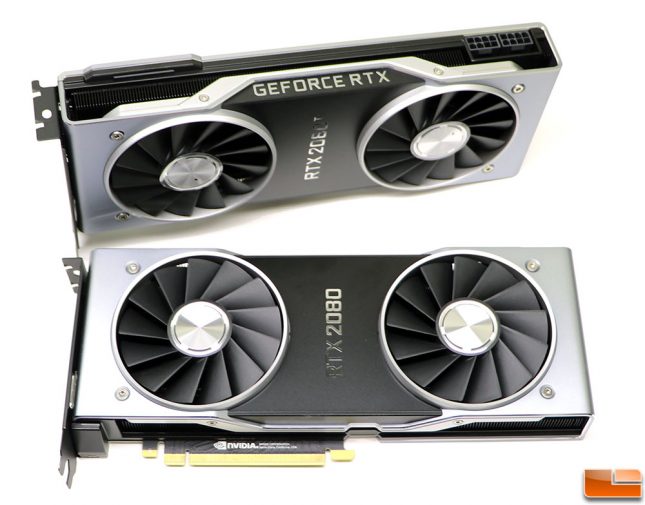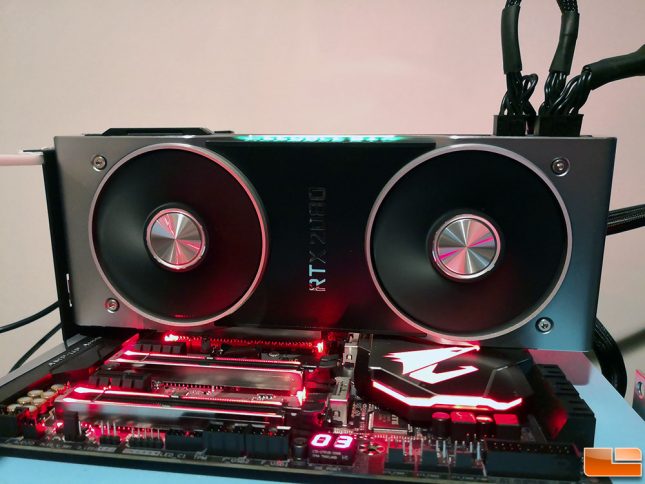NVIDIA GeForce RTX 2080 Ti and RTX 2080 Benchmark Review
Final Thoughts and Conclusions
The NVIDIA GeForce RTX 2080 Ti and GeForce RTX 2080 are both impressive graphics cards that gamers will love to get their hands on. The NVIDIA GeForce RTX 2080 Ti is the fastest, single-GPU that we have tested up to this point in time. It crushes the AMD Radeon RX Vega 64 by nearly 2x in most game titles and has silky smooth 4K gaming performance on most of the game titles out today. The NVIDIA GeForce RTX 2080 Ti held the top spot in every benchmark test that we ran and that speaks for itself. The NVIDIA GeForce RTX 2080 Ti was also an amazing overclocker as we were able to reach a 2.1GHz GPU core clock frequency and get up to 13% more performance in games. This card is a monster and it should be since it is NVIDIA’s new flagship card. This is the card that you want if you plan on investing thousands into a 4K HDR gaming display with G-Sync. We used the Acer Predator X27 4K 27-inch HDR G-Sync monitor for testing and the 2080 Ti is amazing with everything turned on. We didn’t do any HDR testing for this review as we haven’t even had the display for a week, but we’ll start testing with HDR on some titles moving forward as enabling that feature does impact GPU performance.
The NVIDIA GeForce RTX 2080 is also no slouch and is an impressive card as well. We included the GeForce GTX 980 and GeForce GTX 1080 to show the generational improvement gains that can be had in what we consider important game titles and we were not disappointed.
When these two cards will be available to purchase tomorrow, September 20th, the RTX 2080 and RTX 2080 Ti Founders Editions will be available for $799 and $1199 respectively. NVIDIA’s board partners will have starting prices of $699 for the RTX 2080 and $999 for the RTX 2080 Ti, so the Founders Edition cards do carry a slight price premium. We’ll find out more about pricing when the partner cards are released.
The price on the RTX 20-series is higher than we anticipated. When you look at the performance charts and factor in the price that you can get a GeForce GTX 1080 Ti for and then a GeForce RTX 2080/2080 Ti it does make you pause for a minute. We saw some nice scaling over the past three NVIDIA GPu generations. There was a ~60% performance gain from the GTX 980 to GTX 1080 and then a ~40% increase in performance from the GTX 1080 to RTX 2080. The suggested retail price on the cards have also jumped up over time, so that is something you need to keep in mind when comparing generations. Sure it’s 40% faster or whatever it may be, but the price of the model you normally get is up substantially over time.
- GeForce GTX 980 FE $549 in September 2014
- GeForce GTX 1080 FE – $699 in May 2016
- GeForce RTX 2080 FE – $799 in September 2018
- GeForce GTX 980 Ti FE $649 in June 2015
- GeForce GTX 1080 Ti FE – $699 in March 2017
- GeForce RTX 2080 Ti FE – $1299 in September 2018
We haven’t tested DLSS and real-time ray tracing since they aren’t baked into any retail game title just yet, but that will be interesting to see. It’s hard to fully recommend something without seeing all of its features working, but the RTX 20-series is off to a great start. The GeForce RTX 2080 Ti and RTX 2080 have been on our test system and gaming PC since they’ve arrived and we have no plans on going back to a GeForce 10-series card.
If you can handle the price tag the NVIDIA GeForce RTX 2080 and RTX 2080 Ti we think you’ll be very happy. If you don’t like the price tag you might want to take a closer look at the GeForce GTX 10-series cards before they are slowly phased out.
Legit Bottom Line: The NVIDIA GeForce RTX 2080 Ti is the fastest card that we’ve ever tested and we can’t wait to test out all of its new features in the months and years ahead.



